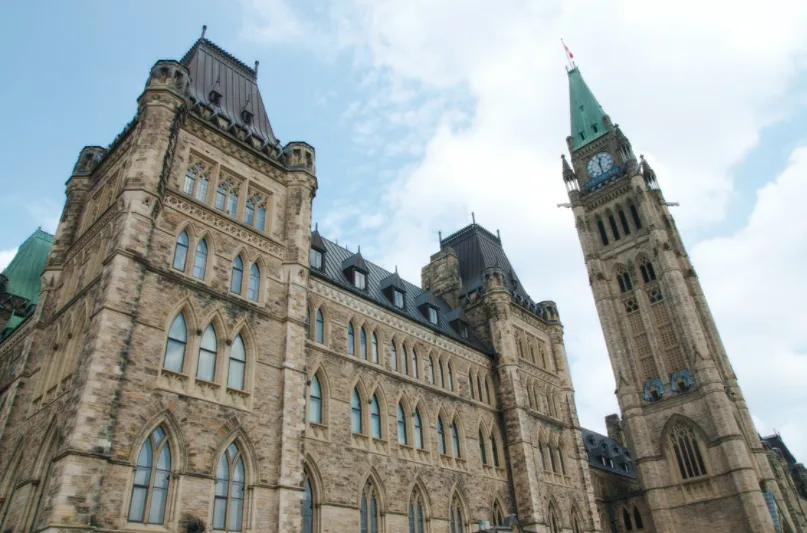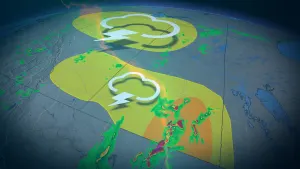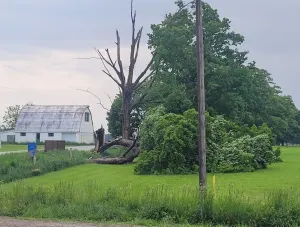
Canada made some big promises at COP26. Here are the next steps
Canadian oil and gas production emissions will be capped at today’s levels, the government stated. Those emissions were 191 million tons (Mt) in 2019, which was much higher than what many other countries released.
The world’s nations agreed to increase efforts to reduce carbon emissions, “phase-down” coal power, and “phase-out” fossil fuel subsidies at last week’s UN Climate Conference of the Parties (COP 26) in Glasgow.
What does COP 26 mean for Canada? Two main things according to Nic Rivers, Canada Research Chair in Climate and Energy Policy at the University of Ottawa:
Canada and other large carbon-emitting countries made ambitious promises at COP 26. “Promises don’t cut emissions,” Rivers told The Weather Network. “Canada now has to make things happen on the ground to keep those commitments.”
Canadians should expect their governments to pick up the pace on the policies and regulations needed for the shift to a low-carbon economy, he said.
There was strong agreement at COP 26 on the need to keep global warming from rising above 1.5ºC. However, countries’ carbon-emission-reduction commitments and promises are not enough to prevent warming of at least 2.4ºC, warned Climate Action Tracker’s independent scientific analysis.
While Canada and other countries have come a long way in the past ten years, much more needs to be done to avoid most of the worst climate impacts, said Rivers.
Severe flooding and landslides forced British Columbia to declare a 14-day provincial state of emergency this week. It is just the latest extreme weather event made far worse by climate change. Only a few months ago nearly 600 people died in B.C during an extreme heat wave that pushed temperatures over 40ºC. Such extreme events are "virtually impossible" without being fuelled by a warmer climate, scientists have said. The global climate is currently about 1.2ºC warmer than pre-industrial temperatures.
The main outcome of the COP is the Glasgow Climate Pact, a document with 97 clauses on a wide range of technical and other issues. Among these is a requirement that Canada and other major carbon emitters show how their policies and plans are aligned with the Paris Agreement’s 1.5 ºC temperature goal at the next COP, a year from now in Egypt.
Canada continues to have the weakest 2030 emissions-reduction target in the G7, with a promised 40 to 45 per cent cut compared to 2005 emissions. During the COP the US was pushing Canada to match it’s 50 to 52 per cent reduction, stated Alden Meyer, a senior advisor at E3G, an independent European climate change think tank. “Even in the US, we can’t yet say we’re doing our fair share to cut emissions,” said Meyer, who is based in the US and who has attended 25 out of 26 COPs.
The “huge victory” at COP 26 was an explicit commitment to “phase down” coal, he said. It’s the first time coal, or even the term “fossil fuel” has been included in the official diplomatic document authored at a COP event in 26 years. In addition the world’s nations also agreed to “phase-out of inefficient fossil fuel subsidies.” There is no time table for either commitment.
Developing countries were bitterly disappointed about the continuing failure of the US, Canada, and other rich nations to meet their 2009 promise of collectively providing at least US $100 billion a year by 2020 to help them adapt to climate impacts and reduce their emissions. This is expected to reach only $85 to $90 billion this year. The bulk of this funding is in the form of loans or re-purposed foreign assistance.
During heated debates in Glasgow, the European Union and US declined to create a fund that the poorest countries, such as small island states, could draw on for losses and damages they suffer as a result of climate-driven, extreme-weather events. For 10 years the US and other wealthy nations have blocked any movement on this issue. However, in Glasgow, the US finally agreed to set up a series of meetings in 2022 to discuss how a loss and damage fund might work, Meyer said.
In Glasgow, Canada said it would end all investment in new coal-power generation at home and internationally and to stop financing fossil-fuel projects abroad by the end of the year. Oil and gas production emissions will also be capped at today’s levels, the government stated. Those emissions were 191 million tons (Mt) in 2019, far more than the majority of countries. While the details and timing are not yet known, the cap will not prevent increased oil and gas production.
For example, the oil-sands industry plans to increase production 25 per cent by 2030 to 3.75 million barrels a day. Should that happen, the emissions from using the oil, known as consumption emissions, would add 625 million tons of carbon dioxide to the atmosphere annually.
“We cannot limit the worst effects of climate change while growing that industry,” said Merran Smith, executive director at Clean Energy Canada.
Smith said one promising development from the COP was Canada joining the Glasgow Breakthroughs, which aim to make key climate solutions like green hydrogen and near-zero emissions steel “accessible” and “affordable” by 2030. That is just 8 years — 98 months — away. “The next six months will be critical, and we expect key measures to move forward imminently,” she said in a statement.
Echoing Smith, Eddy Perez of Climate Action Network Canada said: “We will be watching to ensure Canada finally delivers on cutting emissions, while prioritizing Indigenous Peoples’ rights and a just transition for workers and communities.”
Thumbnail credit: Splash of Rain/ Pexels










